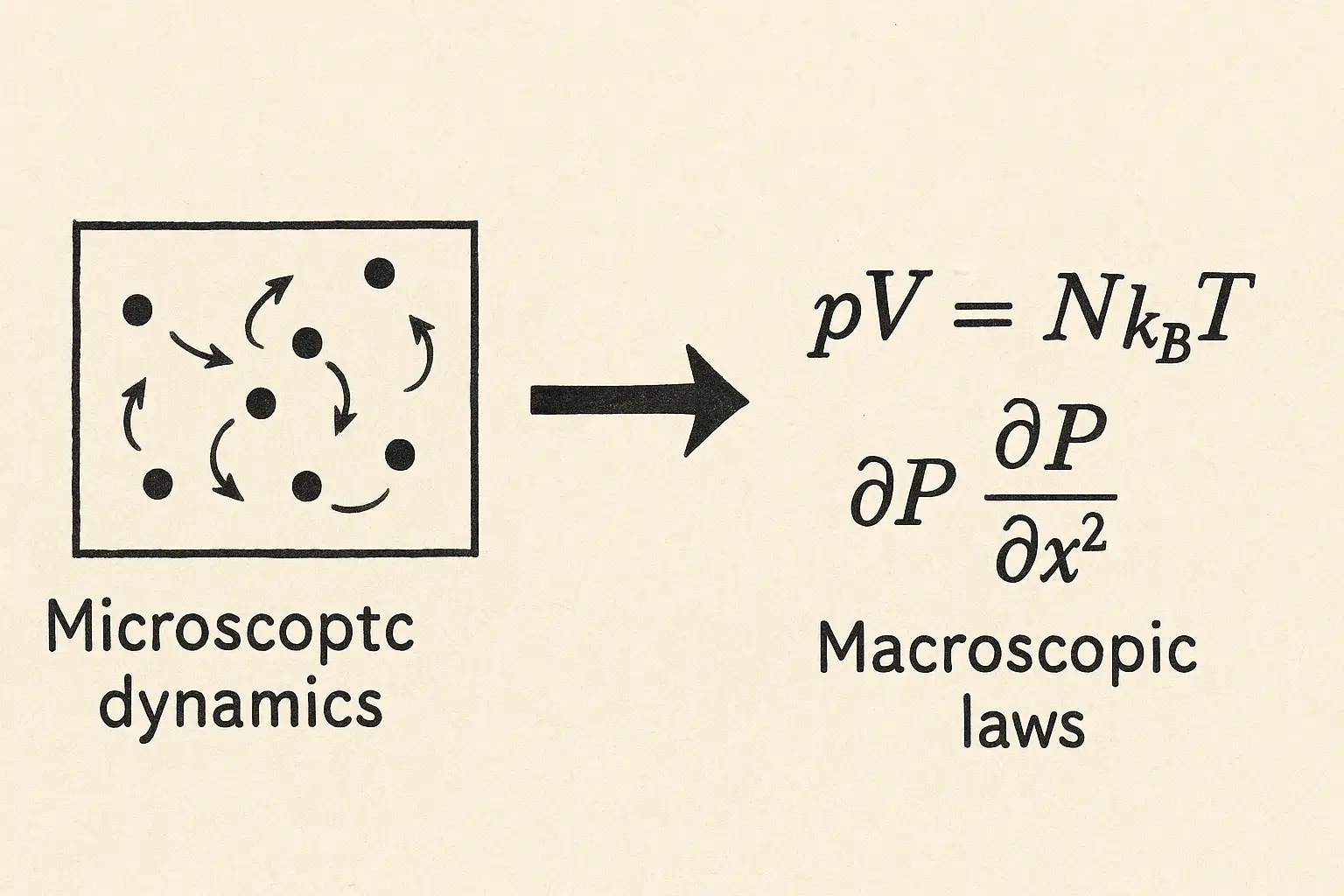Table of Contents
- Introduction
- What Is Classical Statistical Mechanics?
- The Need for a Statistical Approach
- Microstates, Macrostates, and Phase Space
- Liouville’s Theorem and Probability Conservation
- Ensembles: Microcanonical, Canonical, and Grand Canonical
- The Boltzmann Distribution
- Partition Function and Thermodynamics
- Equipartition Theorem
- Entropy and the Boltzmann H-Theorem
- Classical vs Quantum Statistical Mechanics
- Applications of Classical Statistical Mechanics
- Conclusion
1. Introduction
Classical statistical mechanics provides the crucial link between microscopic laws of motion and macroscopic thermodynamic behavior. It does so by applying probability theory to systems of many particles, treating the precise microstate as unknown or irrelevant, and instead focusing on averages and distributions.
This framework explains how deterministic Newtonian motion gives rise to temperature, pressure, entropy, and other thermodynamic quantities.
2. What Is Classical Statistical Mechanics?
Classical statistical mechanics describes large systems of particles using probability distributions in phase space, rather than tracking each particle’s exact trajectory.
While Newton’s laws can describe individual particles, they are impractical for \( N \sim 10^{23} \) particles in a gas. Instead, we study how macroscopic observables emerge from an ensemble of microstates.
3. The Need for a Statistical Approach
Even though the laws of classical mechanics are deterministic, our ignorance of initial conditions and the complexity of many-body systems necessitate a statistical description.
Goals:
- Predict average properties like pressure, energy, entropy
- Derive thermodynamic laws from Newtonian mechanics
- Understand irreversibility and time’s arrow from reversible laws
4. Microstates, Macrostates, and Phase Space
- Microstate: A specific configuration of positions and momenta for all particles.
- Macrostate: A set of microstates consistent with observed macroscopic quantities (e.g., total energy, volume, number of particles).
For a system of \( N \) particles:
\[
\text{Microstate} = \{q_1, …, q_N, p_1, …, p_N\}
\]
Phase space has \( 6N \) dimensions: each microstate is a point in this space.
5. Liouville’s Theorem and Probability Conservation
Liouville’s theorem ensures that probability is conserved in phase space evolution:
\[
\frac{d\rho}{dt} = \frac{\partial \rho}{\partial t} + \{\rho, H\} = 0
\]
Where \( \rho(q, p, t) \) is the distribution function.
This means the density of representative points in phase space remains constant along the trajectory.
6. Ensembles: Microcanonical, Canonical, and Grand Canonical
An ensemble is a conceptual collection of many copies of the system, each in a different microstate but consistent with the same macroscopic constraints.
a. Microcanonical Ensemble
- Isolated system (fixed \( N, V, E \))
- All accessible microstates are equally probable
\[
\rho = \frac{1}{\Omega(E)} \quad \text{if } H = E
\]
b. Canonical Ensemble
- System in thermal contact with a reservoir at temperature \( T \)
- Fixed \( N, V, T \)
\[
P(E) = \frac{e^{-\beta E}}{Z}, \quad \beta = \frac{1}{k_B T}
\]
c. Grand Canonical Ensemble
- Variable particle number
- Used for systems exchanging particles and energy
- Useful in quantum gases and open systems
7. The Boltzmann Distribution
In the canonical ensemble, the probability of a system being in a microstate with energy \(E_i\) is:
\[
P_i = \frac{e^{-\beta E_i}}{Z}
\]
This distribution reflects that higher energy states are exponentially less probable at fixed temperature.
8. Partition Function and Thermodynamics
The partition function encodes thermodynamic quantities:
\[
Z = \sum_i e^{-\beta E_i}
\]
- Free energy: \( F = -k_B T \ln Z \)
- Internal energy: \( U = -\frac{\partial \ln Z}{\partial \beta} \)
- Entropy: \( S = -\frac{\partial F}{\partial T} \)
- Pressure: \( P = -\left( \frac{\partial F}{\partial V} \right)_T \)
9. Equipartition Theorem
Each quadratic degree of freedom contributes:
\[
\langle E \rangle = \frac{1}{2} k_B T
\]
E.g., an ideal gas with \( 3N \) degrees of freedom:
\[
U = \frac{3}{2} N k_B T
\]
10. Entropy and the Boltzmann H-Theorem
Boltzmann’s entropy formula:
\[
S = k_B \ln \Omega
\]
Where \(OmegaΩ\) is the number of accessible microstates.
The H-theorem shows:
\[
\frac{dH}{dt} \leq 0
\]
showing that systems evolve towards equilibrium, justifying the second law of thermodynamics statistically.
11. Classical vs Quantum Statistical Mechanics
- Classical: Continuous phase space, distinguishable particles
- Quantum: Discrete states, indistinguishable particles (Bose-Einstein, Fermi-Dirac)
Classical statistical mechanics is valid when quantum effects are negligible (e.g., high temperature, low density).
12. Applications of Classical Statistical Mechanics
- Ideal and real gases
- Thermodynamic identities
- Chemical reactions and equilibria
- Thermal conductivity and diffusion
- Statistical derivation of pressure and temperature
It provides a microscopic foundation for the laws of thermodynamics.
13. Conclusion
Classical statistical mechanics elegantly unifies deterministic laws and probabilistic reasoning. It shows how the unpredictable behavior of individual particles leads to highly predictable macroscopic behavior — all via the structure of phase space and the power of statistical ensembles.
Understanding this subject is essential for anyone working in thermodynamics, kinetic theory, or the transition to quantum and statistical field theories.


